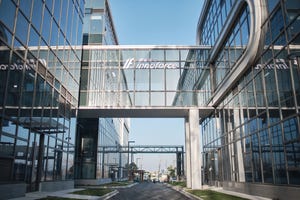
Big Pharma mobilization and a series of approval firsts dominated the seasonal cell and gene therapy review, but failures in patient access post-commercialization took the top spot.
In what has become a highlight of Phacilitate’s Advanced Therapies Week, Susan Nichols, chief business officer at ViroCell Biologics, highlighted 10 events from 2022 that drove conversation, investment, and innovation in regenerative medicine.
She told delegates in Miami, Florida the past 12 months saw “the highest of the highs” in the cell and gene therapy space, with a slew of long anticipated approvals, including for indications outside of oncology and rare disease, as well as signs industry is “finally getting into the larger patient populations that we’ve spoken about for years.”

However, Nichols noted it would be remiss not to mention the many lows of the year, citing investments down 44% from 2021, record layoffs in the space, Big Pharma departures, regulatory agencies struggling to keep up with the speed of innovation, and continued supply chain shortages.
And it was one of the more negative elements of the industry that took the top spot: limited patient access post-approval. The approval of Bluebird’s gene therapy Zynteglo in August took drug pricing to a new high with a list price of $2.8 million, trumped only by CSL Behring’s Hemgenix (etranacogene dezaparvovec), approved in November with a price of $3.5 million.
With the science of advanced therapies proven and industry bracing for another year of cutting-edge approvals, “wouldn’t it be a shame to develop life-saving medicines no one can afford,” said Nichols.
The top spot in 2021 focused on advancements in line of treatment for CAR-Ts, with the likes of Yescarta (axicabtagene ciloleucel) and Breyanzi (lisocabtagene maraleucel; liso-cel) going from a fourth or fifth line to a second-line standard of care.
The full top 10 cell and gene therapy milestones for 2022 can be found in reverse order below:
10) Big Pharma expands toolkit
“Big Pharma is investing to expand future use, relying on external innovation for the next generation pipeline, and to overcome manufacturing bottlenecks currently experienced,” she explained.
“Bio bucks allow shared risk and reward and we saw a whole lot of collaborations, which show a strategic commitment on behalf of Big Pharma to ensure that the technology is funded with the possibility of clinical success.”
9) First gene therapy approval beyond rare disease
In December, Ferring Pharmaceuticals won US FDA approval for its AAV gene therapy Adstiladrin (nadofaragene firadenovec) to treat adults with high-risk Bacillus Calmette-Guérin (BCG)-unresponsive non-muscle invasive bladder cancer (NMIBC) with carcinoma in situ (CIS) with or without papillary tumors.
“First, this is a solid tumor therapy, with over half the patients seeing no signs of cancer after one year. Second, it’s a gene therapy in the oncology arena. Third, this is one of the most prevalent cancers,” she said, with 600,000 patients in the US alone currently under care for bladder cancer.
“That potential sets a precedent and paves a pathway for gene therapy approach to solid tumors.”
8) Alternative funding
Yes, funding fell in 2022 across the board but the CGT space found nontraditional ways to ensure continued R&D.
One example was raising funds through selling Priority Review Vouchers (PRV): Bluebird Bio received $102 million from Argenx, while Bridge Bio made $110 million by selling its PRV to an undisclosed buyer.
Other methods of fundraising saw Autolous look to sell $150 million of its stock following pivotal data readout for its CAR-T candidate obe-cel. The firm also collected $70 million in milestone payments from Blackstone Life Sciences.
7) Hemophilia A and B drug approvals
Nichols, a known advocate for the rare disease community, said she was “thrilled” 2022 saw breakthroughs in hemophilia, with two CGT hemophilia approvals: BioMarin’s Roctavian (valoctocogene roxaparvovec) for hemophilia A in Europe and CSL Behring’s Hemgenix (etranacogene dezaparvovec) for hemophilia B in the US.
“What I really find a signal of what’s to come is insurers approved a €1.5 million [($1.6 million)] reimbursement [for Roctavian] based on cost savings and value,” she said. “This is game changing.”
6) Big pharma dominates M&A
Nichols reeled off a list of notable Big Pharma CGT investments, acquisitions, and partnerships in 2022, including:
Eli Lily acquiring Akouos for $600 million, adding a hearing-loss gene therapy
Astra Zeneca buying Neogene for $320 million
Vertex’s $320 million purchase of ViaCyte for islet cell space
Roche and Poseida’s $110 million hematologic CAR-T deal
Astellas’ $50 million investment in Taysha for CNS gene therapies
“This is proof and point that Big Pharma is willing to pay for the risk assets. It points to the runway, to industry maturity, as data is benchmarked against other approved therapies. Mergers, acquisitions, partnerships, and collaborations reign.”
5) Larger patient population growing pains
The FDA approved Carvykti (ciltacabtagene autoleucel) for multiple myeloma. The same month, BMS’s Abecma (idecabtagene vicleucel) won myeloma indication approval.
“The good news is we finally have therapies that treat the larger patient populations. We’ve been waiting for this ability for a long time.”
However, the “stunning response rate” and higher patient population means demand is far greater than supply. Carvykti, for example, is only available in a limited number of hospitals while Janssen scales up production capabilities.
4) Leveraging trailblazers’ prior experience and scale
The pioneers in the space are using their experience to bring more CGTs through the clinic, said Nichols. For example, 2022 saw Gilead’s Kite both acquire Tmunity Therapeutics – adding an ‘armored’ CAR-T technology platform among other assets – and take a 50% stake in a cancer drug being developed by US biotech Arcellx. Kite will be responsible for the manufacturing.
Meanwhile, Novartis (with Kymriah under its wing) struck a deal to make a macrophage-based cell therapy targeting breast cancer for Carisma Therapeutics from its Morris Plain, New Jersey site.
“These more experienced CAR-T teams will lend invaluable manufacturing expertise and infrastructure to help accelerate these therapies to patients.”
3) First allogeneic T-cell approval
“We’ve been talking about this for what seems like forever,” said Nichols, referring to the approval in Europe of Atara’s Ebvallo (tabelecleucel). The product is the first and only treatment for rare blood cancer Epstein‑Barr virus positive post‑transplant lymphoproliferative disease (EBV+ PTLD).
This could open the floodgate for more allogeneic products, including Gamida’s hematopoietic stem cell (bone marrow) transplant for patients with blood cancers, which has a PDUFA date of January 30 in the US.
2) Approval FOR second line large B cell lymphoma
Yescarta went head-to-head against the standard of care for large B cell lymphoma (hematopoietic stem cell transplant) and proved its worth. As such, patients are now able to start on Yescarta after failing first-line chemo or relapsing within 12 months of chemotherapy.
“This sets a precedent to move part of the treatment paradigm to earlier intervention,” said Nichols. “It also expands access to a larger patient population which often makes it more profitable for Big Pharma and more willing to invest in the sector.”
1) Limited patient access post-approval
Nichols ended on a sour note. “Sustained sustainable access and reimbursement are the goal,” she said, and 2022 showed we are a long way from achieving this.
She described Europe as approaching a crisis, with seven out of 24 approved products withdrawn. Reimbursement policies have caused Bluebird Bio to exit the market after failing to reach agreements with European authorities over the prices of its gene therapies. Meanwhile, out of the 254 clinical trials initiated last year, only three were initiated in Europe.
The US fared slightly better, but Nichols pointed out the regulatory structure is still based on a maintenance drug model and will not cope with the impending deluge of CGTs.
Thus, “modernization is crucial to patient access,” she told delegates. “Let’s make it easier. Our drugs are only effective when patients receive benefit. Not just a specific geography or socio-economic subset but access for all, including those that must cross borders to receive treatment.
“As an industry, I call for us all to stay focused and flexible.”
About the Author
You May Also Like

schedl_b_and_w.jpg?width=100&auto=webp&quality=80&disable=upscale)
schedl_b_and_w.jpg?width=400&auto=webp&quality=80&disable=upscale)






